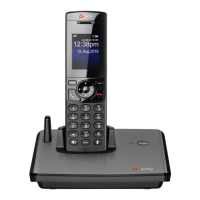Parameter Reference
94
CallerIDEnable Enables Caller ID Signal generation. This
option can be set to Yes even if the
attached handset isn’t capable of
displaying Caller ID. There is no harm in
sending Caller ID signal while the
handset is in the on hook state.
Yes
CallWaitingCallerIDEnable Enables Call Waiting Caller ID (CWCID)
Signal generation.
The CWCID signal is sent to the handset
when it is in the off hook state. It starts
with a handshake between the device
and the attached handset, by exchanging
audible short tones. The device proceeds
with the transmission of the remaining
Caller ID signal only if the handshake
succeeds (with a handset is capable of
displaying CWCID). In that case the
handset mutes the handset earpiece until
the CWCID signal is complete. Some
users however may still find the audible
handshake tones objectionable,
especially if their handsets don’t support
CWCID. Set this option to No if you don’t
want the CWCID feature, or don’t have
handsets that can display CWCID.
Yes
MWIEnable Enables MWI Signal (stutter dial tone)
generation. If enabled, any SP voice
service enabled on the device that has
MWI Service enabled triggers the
generation of stutter dial tone if there are
new voicemails for the subscriber on the
service provider’s voicemail system.
Yes
VMWIEnable Enables VMWI Signal generation. If
enabled, any SP voice service enabled
on the device that has VMWI Service
enabled triggers the generation of VMWI
signal if there are new voicemails for the
subscriber on the service provider’s
voicemail system.
Yes
Handsetn Settings Parameter Guide (n = 1, 2, ..., 9, 10)
Parameter Description Default Setting

